
I’m curious if this ever happens to you. You think that something you know is so obvious that everyone else knows it too. When, in fact, they absolutely don’t. It’s only obvious to you because you’re knowledgeable of (or dare I say, obsessed with) that particular topic.
Well, it happened to me recently when, upon suggesting to a friend that she should repot her struggling houseplant, she replied, “Sure, I’ll transplant it as soon as I get a bigger pot.”
Wait a minute! The soil was soaked and soggy. And the plant was wobbly in the pot. So the last thing it needed was a bigger pot.
On the contrary. This plant was in serious need of downsizing.
It had never crossed my friend’s mind that when you repot a plant, you don’t automatically move it to a larger container. Repotting doesn’t necessarily mean potting up. Sometimes, it can mean repotting in the same pot or even potting down into a smaller pot.
Here are a few scenarios when (and reasons why) you should repot your houseplant into a smaller pot.
1. The plant was already over-potted when you bought it.
Most of the time, store-bought houseplants tend to come crammed in too small a pot. So one of the first things we do when we bring home new plants is to give them a bit of room to stretch their legs.
But that’s not always the case. Every now and then, the plants come in a pot that’s a bit too large for their needs. This happened to me with a Dracaena fragrans (corn plant) that came in a large nursery pot.
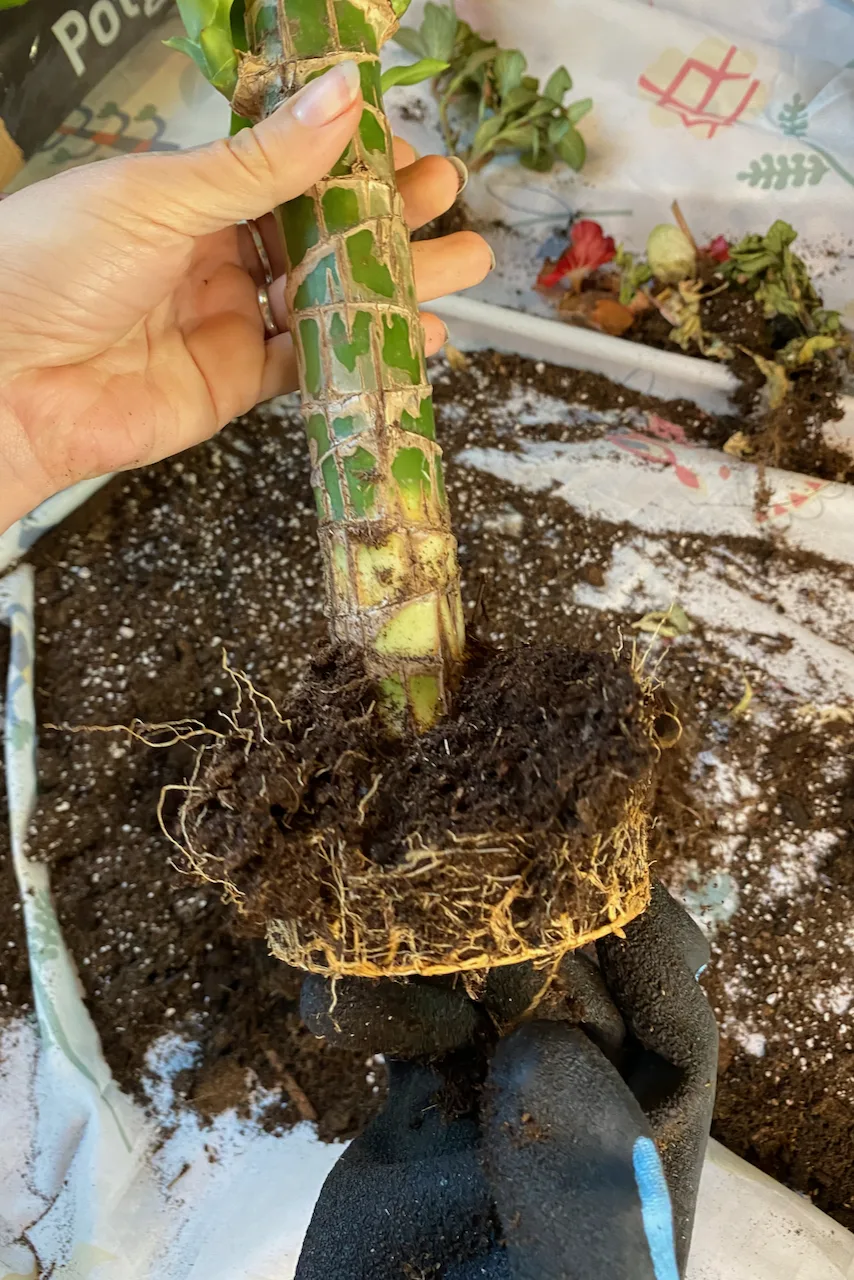
After a couple of months, this plant wasn’t exactly struggling, but it wasn’t doing great either. Fine, I would repot it. Which would give me the chance to inspect the roots. I thought the roots might be crowded; so imagine my surprise when I took it out of the pot it came in.
The roots only took up the bottom quarter of the pot, if that.
The rest was just filled to the brim with too much potting soil. To the point where a large chunk of the stem was also covered. Naturally, I repotted this to a smaller container. Since Dracaena is still a top-heavy plant, I made sure the container was just as tall, but I didn’t fill it all the way up with soil.
2. The soil stays soggy for too long, even when you’re not overwatering.
You know me, I talk a lot about the sin of overwatering. I managed to kill my fair share of houseplants by simply being too generous with their water supply. But sometimes, even when I know for sure I’m not overwatering, the soil simply stays too moist for too long. Part of it may be because the soil isn’t draining well.
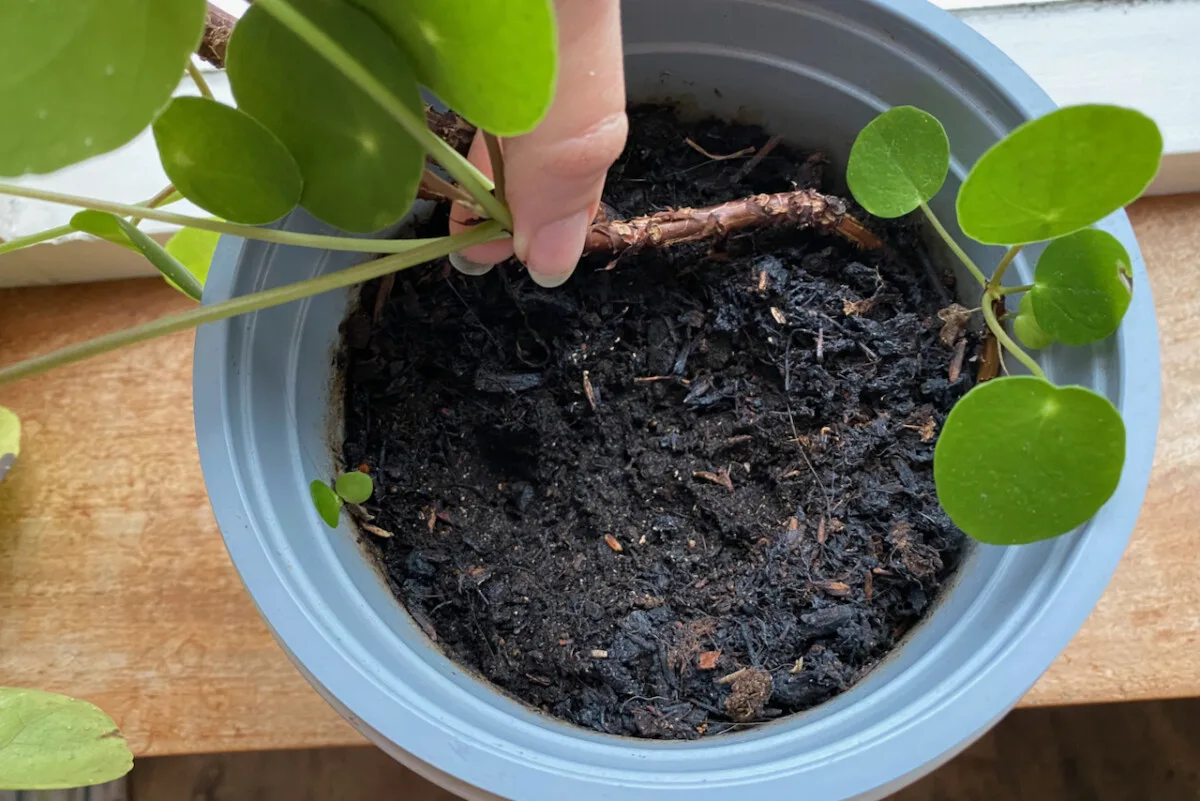
But another common cause for soggy soil is because there simply aren’t enough roots to absorb all the moisture.
This will become evident in the colder and darker months when houseplants enter a period of dormancy. Plants don’t grow as fast (if at all) and the leaves don’t perspire as much as they do in the summer. So the roots don’t pull as much water, and the soil stays wet longer.
I had this problem with my Pilea peperomioides plant (aka pancake plant). I knew I wasn’t watering it too much or too often, yet the soil would remain damp for too long. The potting soil had a bit of bark and plenty of coco coir for drainage. So it wasn’t a soil problem, it was a water absorption problem.
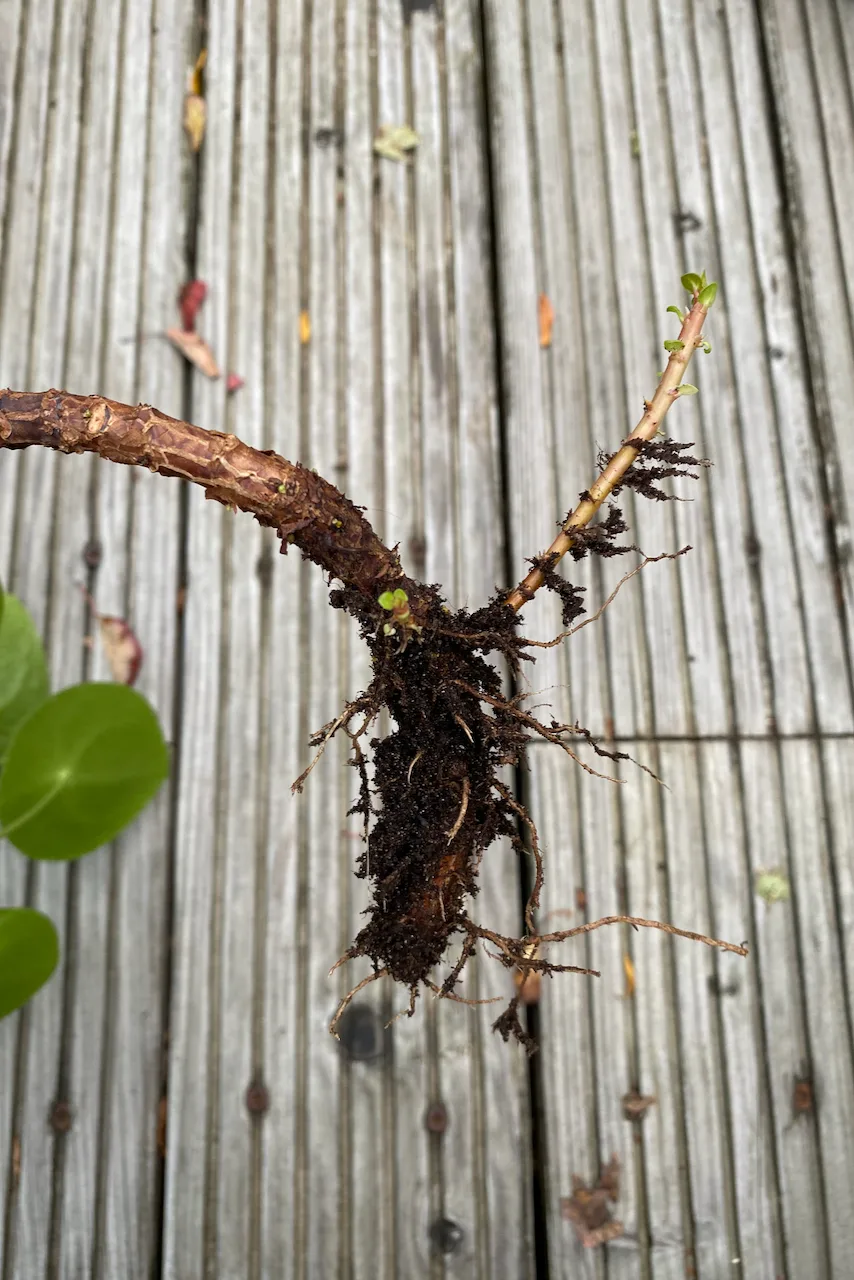
The solution was to repot the houseplant into a smaller container. Again, please make sure first that you’re not overwatering and, secondly, that you’re using the right potting mix for indoor plants.
3. The plant has a small root structure.
Some houseplants simply have roots that stay small, even throughout the plant’s maturity. This small root structure doesn’t need to be drowning in a mass of potting soil. Especially not when we keep the houseplant indoors (it’s a different story with outdoor containers). So repotting it to a larger container is not such a good idea.
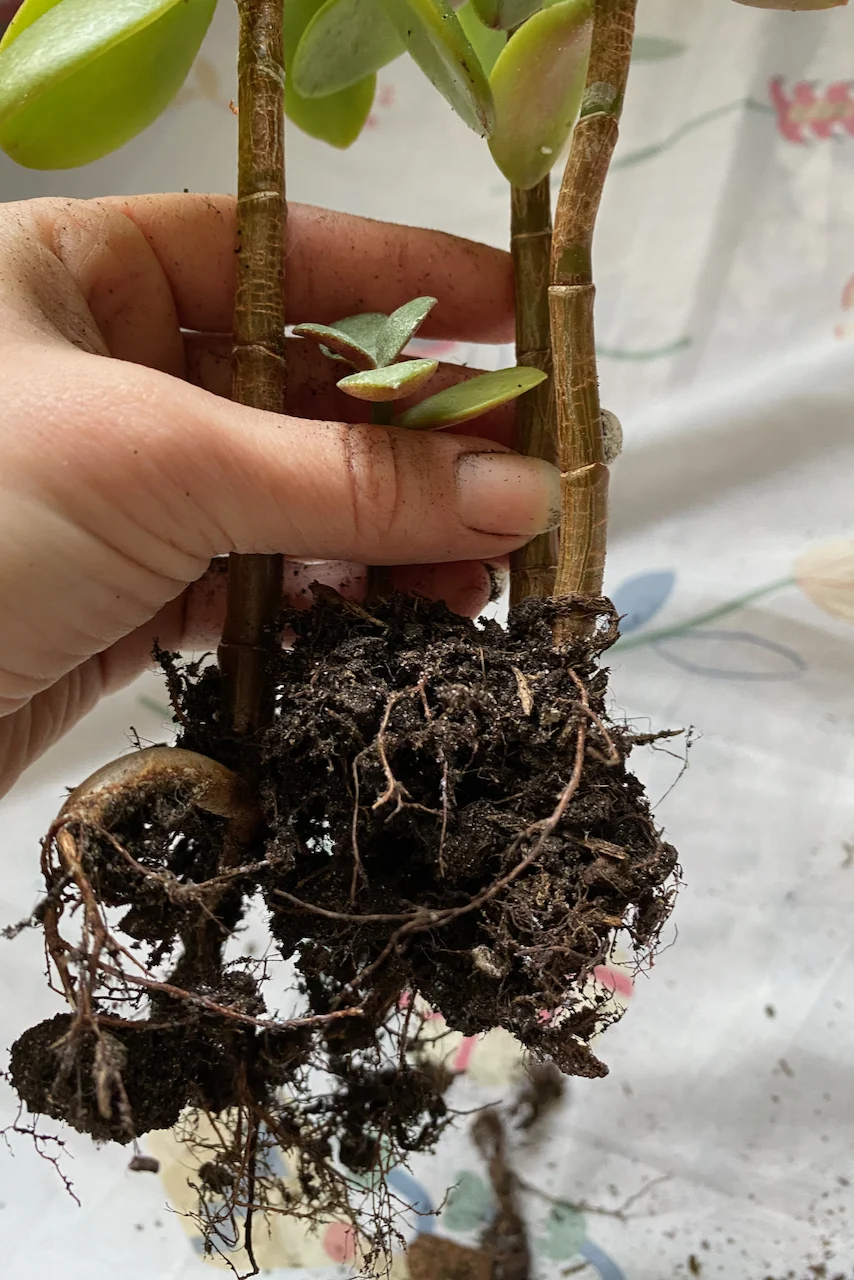
Succulents, cacti and African violets are three very common examples of houseplants that have tiny roots. They don’t need them, since there isn’t much water to draw from the soil in their natural habitat anyway. Check out the tiny roots on these cacti that I’ve repotted.
This is also true of plants that grow in rocky terrain in the wild, such as the beautiful nerve plant (Fittonia albivenis).
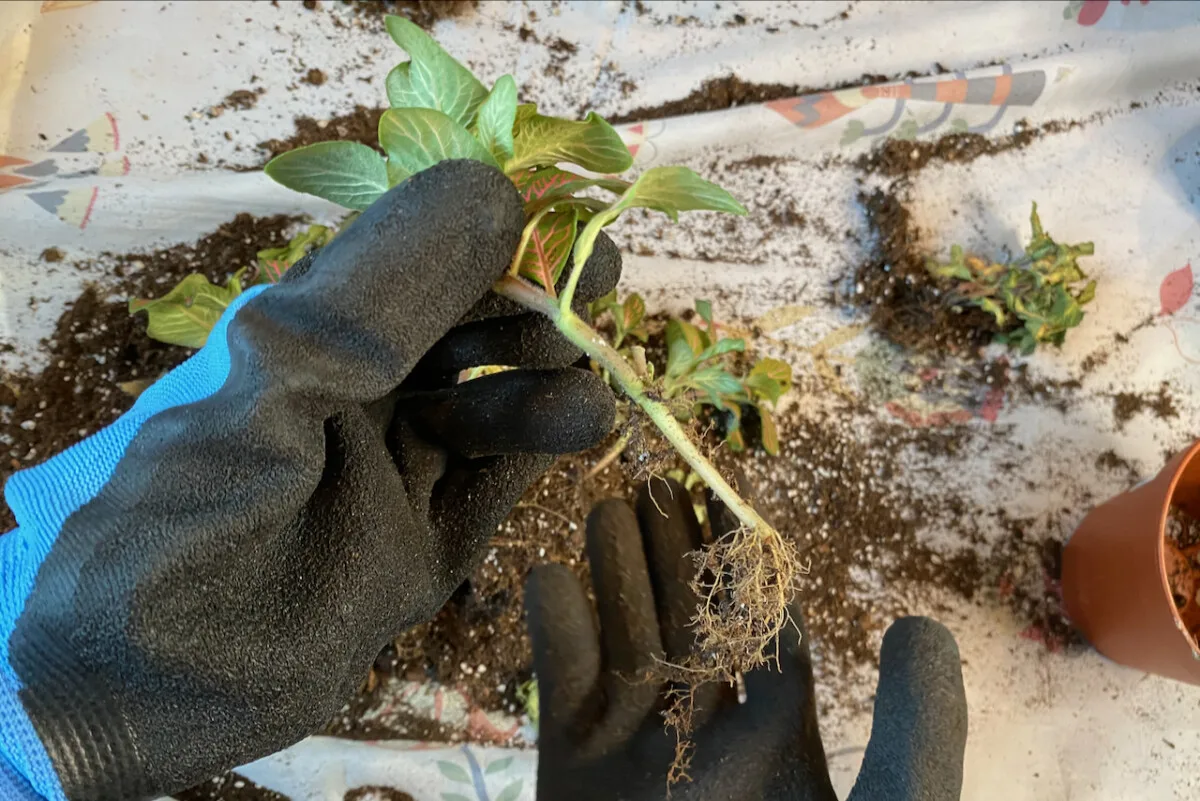
But there are other plants that are so top-heavy, that you’d never consider they aren’t properly anchored by large roots.
Take the pancake plant again, as an example. When I was first repotting this plant, a couple of years after I first got it, I had already prepared a larger container to move it to. Imagine my surprise when I realized how small the roots were.
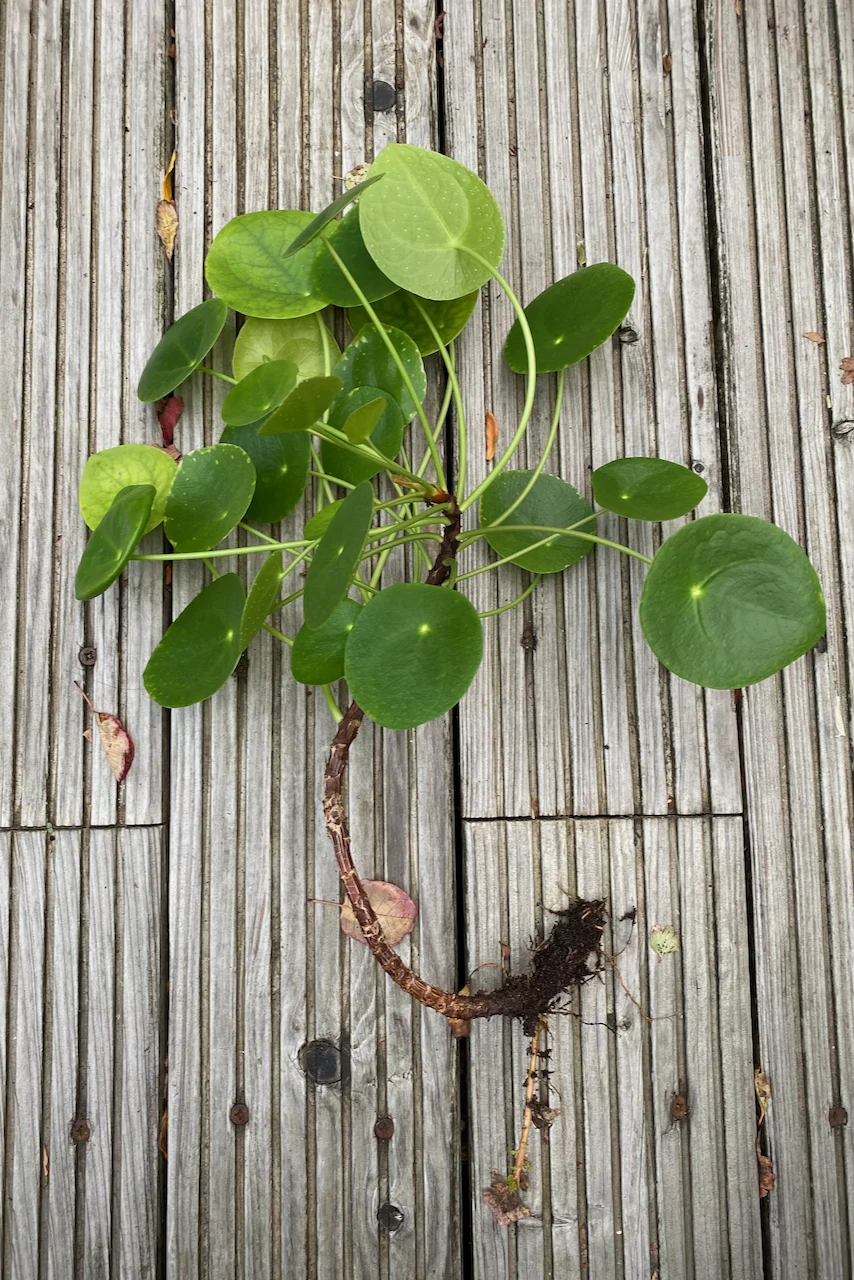
This was a mature plant that had already produced a good amount of Pilea pups. Change of plans. I ended up moving it to a container smaller in diameter than the one I started with.
4. You upsized the pot too much when you repotted it.
Been there, done that! I had this super root-bound Monstera deliciosa that I had been procrastinating on repotting for a couple of months. It was way overdue.
I know now – and I knew then – that you’re only supposed to upgrade to a pot that’s about one size larger in diameter. That translates to roughly two to three inches (or five to eight centimeters) for most pot designs.
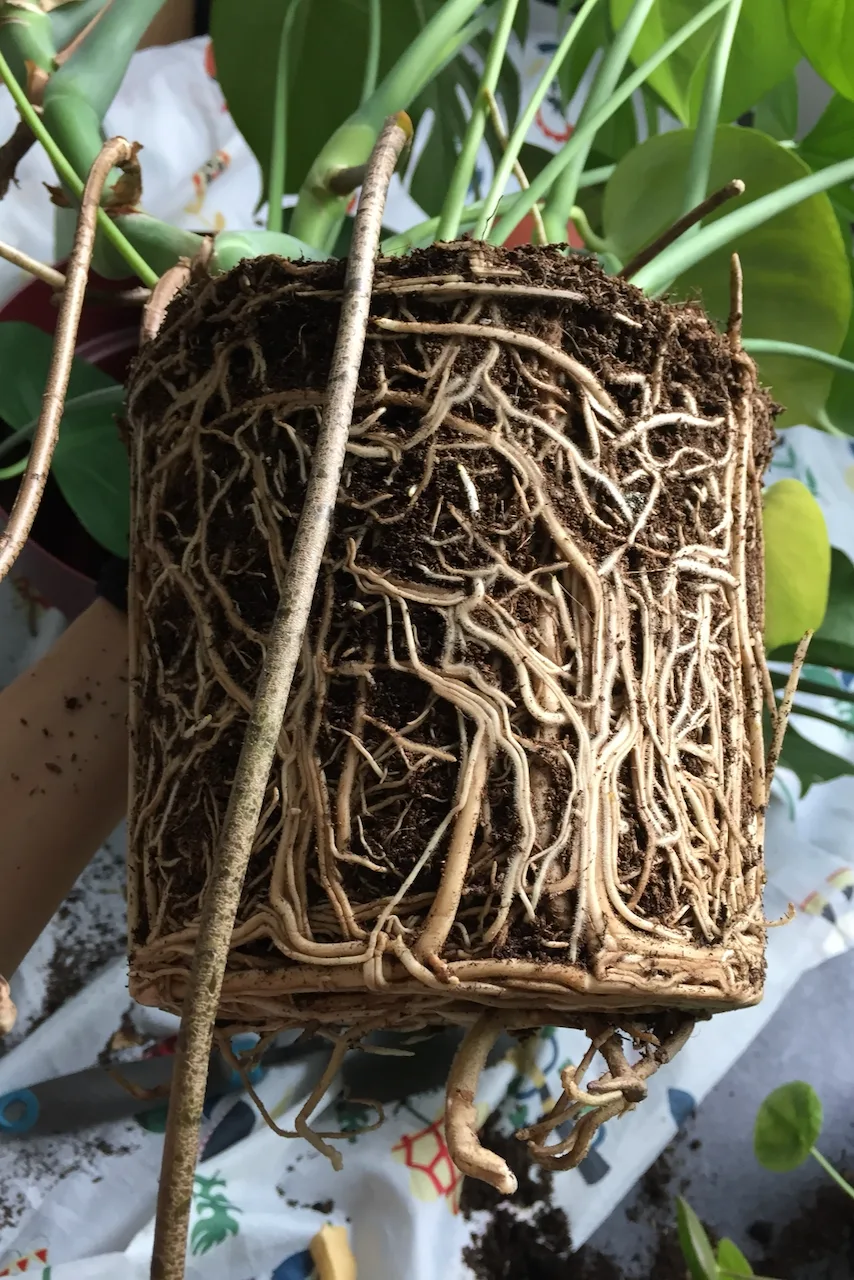
But since the roots were so crammed anyway, and the plant fairly large, wouldn’t it make sense to break this rule? I decided it would. So I really upsized the pot. Surely, this would save me one extra repotting in the future, right? Since I was already skipping at least an intermediate pot size.
My laziness turned out to be more work than it was worth. Because the excess soil in the pot was staying too wet for too long, I got an explosion of fungus gnats that took a couple of months to solve. (These work great, by the way.) I ended up spending extra money on yellow sticky traps. And ended up spending extra time transplanting my plant to a smaller pot.
The shortcut of skipping an intermediate pot size turned out not to be a shortcut anyway.
How do I know the pot is not too small?
Now that you know you can downsize the pot, it makes sense to wonder how small is small enough. I follow the same rule of thumb as I do when I upsize the container.
I try to repot into a container that’s only one size smaller than the original one. As a reminder, that’s about two to three inches smaller in diameter.
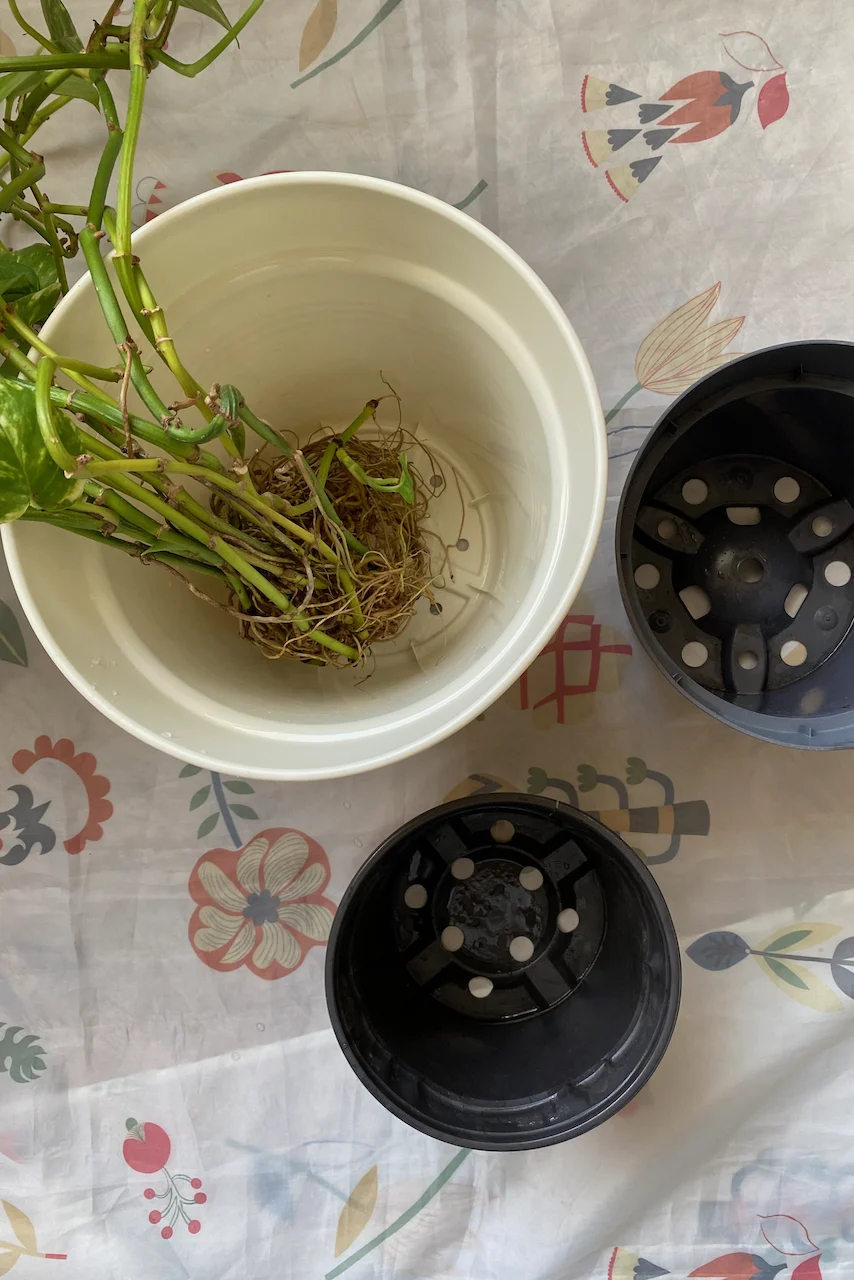
If all the roots fit without you having to jam them in, and if there’s enough room for potting soil without overspilling, then the container is large enough.
Tip: Try out different size containers while you’re repotting.
Because repotting is usually a messy job, I’ve made it a habit to collect a few pots of different sizes before I start playing in the dirt. I’ll admit I’m not very good at estimating how well the plant will fit in a pot from a distance. Sometimes I just have to try it out before I commit to a container.
In the case of this pothos, I collected three pots of varying sizes. That was all I had available at this point since most of my other pots were in use.
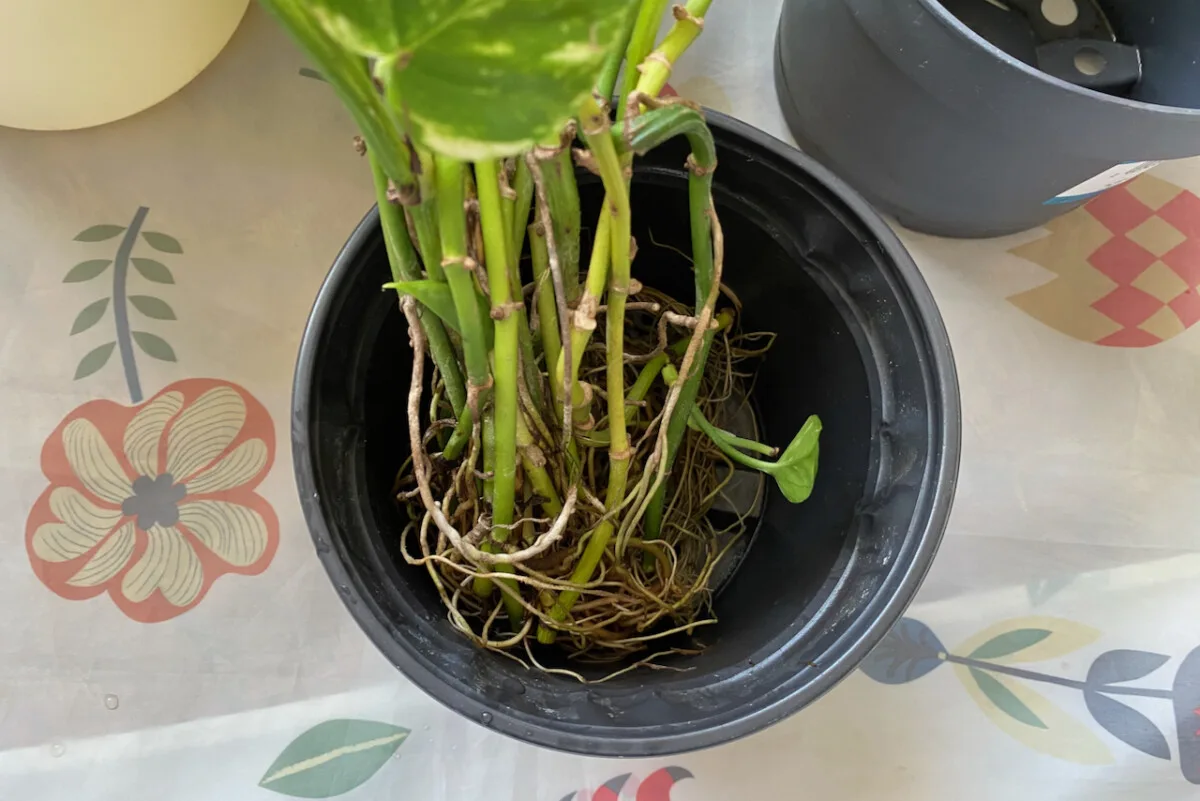
The white container was definitely too large. The roots would have been surrounded by too much soil, even if I didn’t fill it all the way to the top.
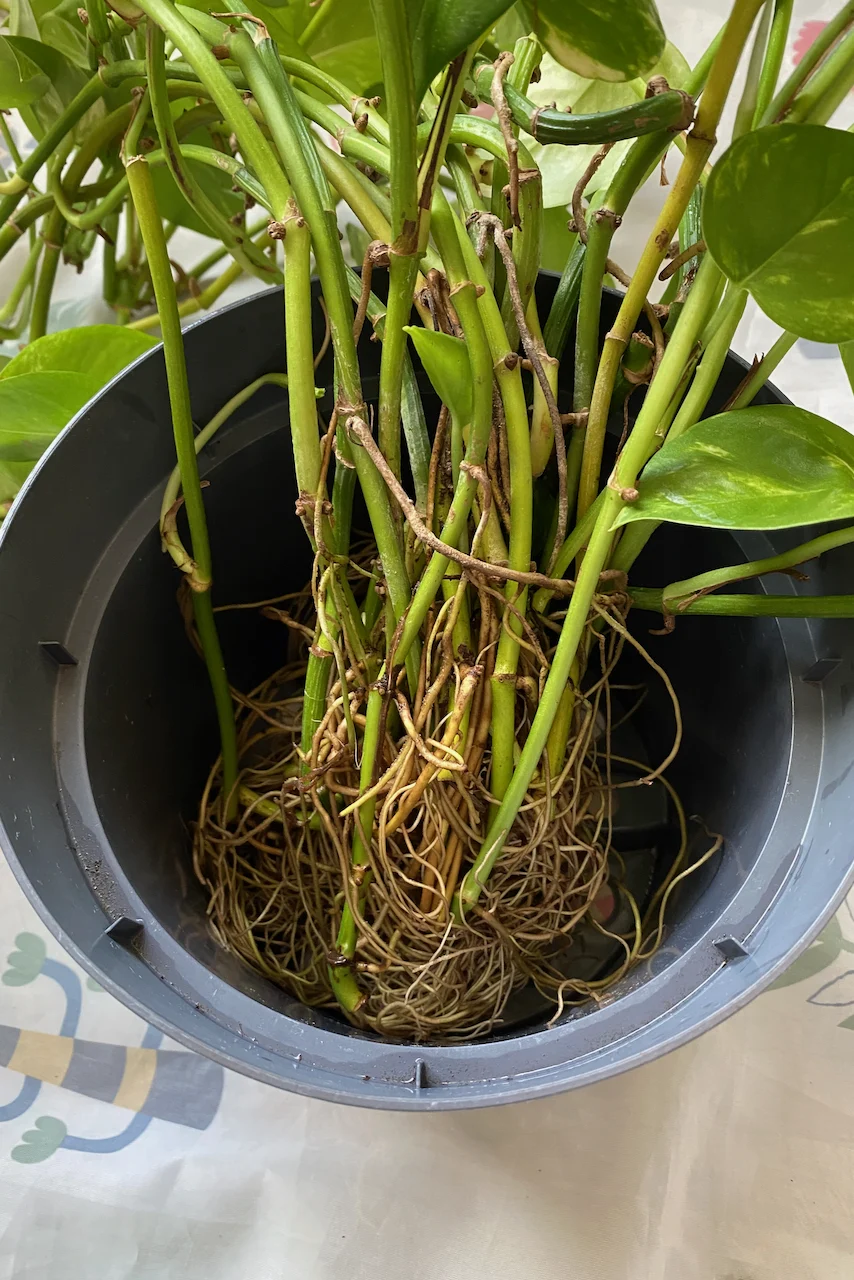
The smallest pot was a hair too tight. The roots fit perfectly, but there wouldn’t have been enough room for the soil to anchor this hanging plant.
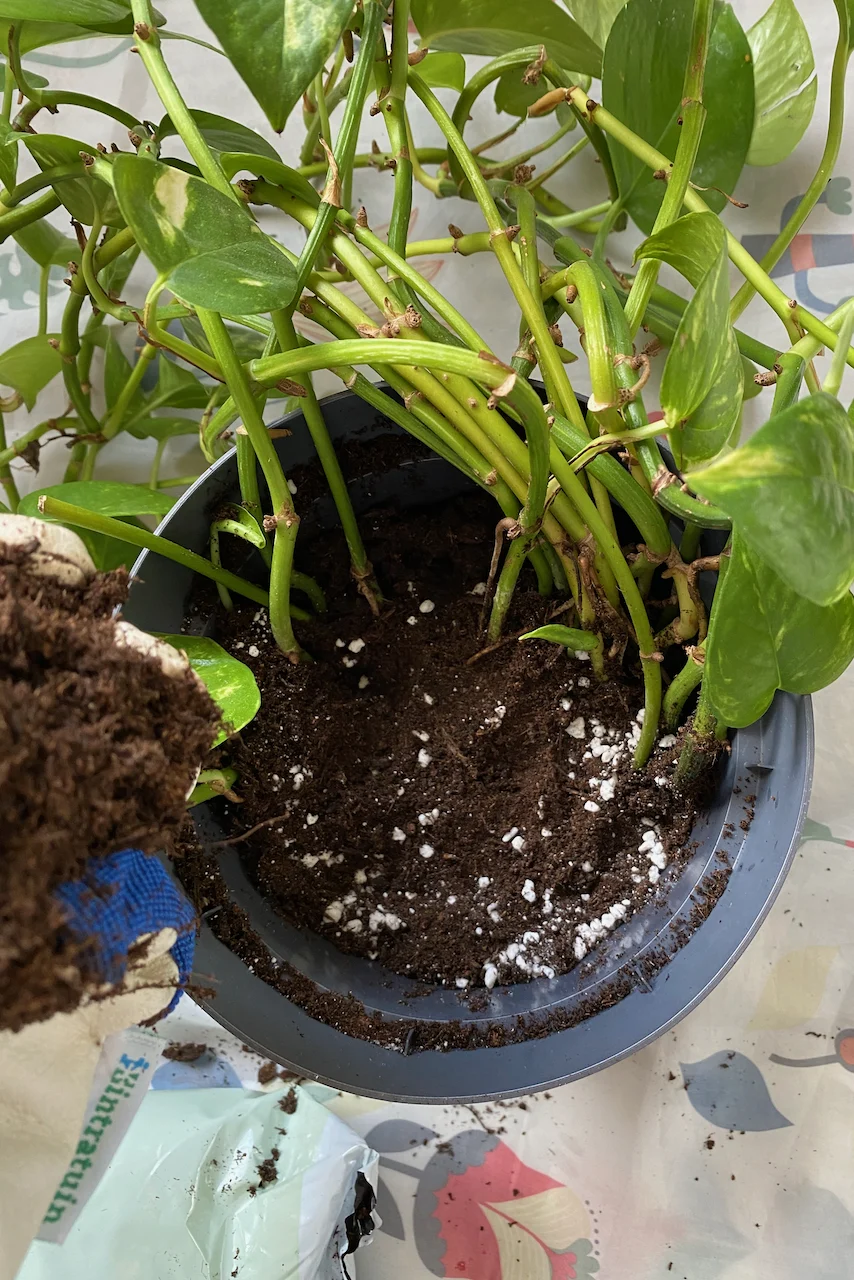
So the medium pot would have to do. There was still a bit of extra wiggle room for the roots, but I think it will fill up quickly since pothos is a notoriously fast-growing plant.
I hope I’ve convinced you that repotting does not necessarily mean up-potting. Like most things about keeping houseplants, all it takes is a little trial and error before you figure out what makes your houseplants happy.

Get the famous Rural Sprout newsletter delivered to your inbox.
Including Sunday ramblings from our editor, Tracey, as well as “What’s Up Wednesday” our roundup of what’s in season and new article updates and alerts.

